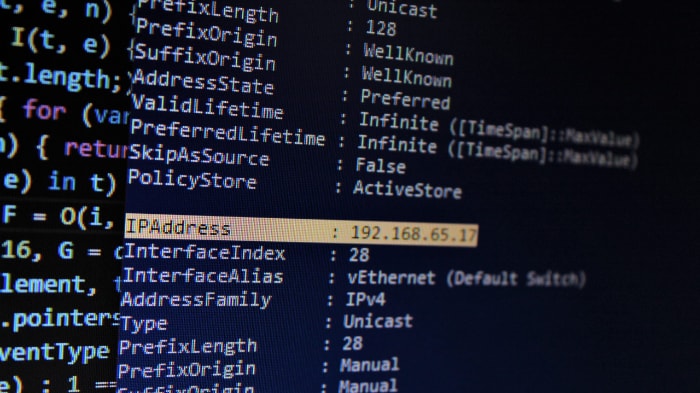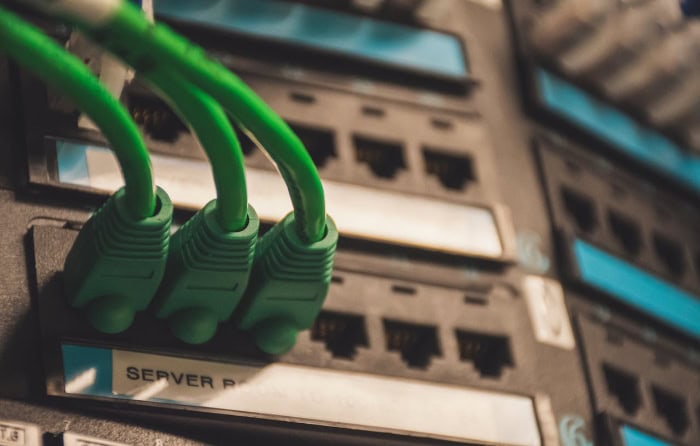IPv4 vs. IPv6: What Changes and Why It Matters

Running out of unique internet addresses was never part of the plan when IPv4 was created, but today, every smartphone, sensor, and connected device is competing for a spot on the world’s networks. IPv6 steps up to meet this explosive demand, bringing with it innovations designed for the future of connectivity.
This article breaks down the technical contrasts between IPv4 and IPv6, examines the real advantages that IPv6 offers, addresses some of the obstacles organizations face during migration, and looks at how these protocols perform in practical situations.
Fundamental Technical Differences
Shifting from IPv4 to IPv6 involves more than just an increase in the number of available IP addresses. The two protocols offer distinct technical frameworks, from the way addresses are constructed to the methods used for device configuration and data routing.
These foundational differences shape how efficiently networks operate, how easily they grow, and how they accommodate the ever-increasing demand for internet connectivity.
Address Structure and Capacity
The most obvious distinction between IPv4 and IPv6 lies in the format and quantity of addressable devices. IPv4 operates on a 32-bit system, permitting around 4.3 billion unique addresses.
While this sounded like more than enough decades ago, today's global device count far exceeds that limitation. Each IPv4 address is presented in a simple dotted decimal format, such as 192.168.1.1, which many find easy to read and remember.
IPv6, by contrast, is built on a 128-bit system, resulting in a staggering 3.4 x 10³⁸ possible addresses. To put this into perspective, IPv6 can provide trillions of unique addresses for every person on earth, effectively eliminating any risk of address exhaustion.
IPv6 addresses are displayed in hexadecimal, separated by colons, like 2001:0db8:85a3::8a2e:0370:7334. This extended format may seem complex, but it makes it possible to support the growing ecosystem of connected devices, including everything from smartphones and laptops to smart refrigerators and industrial sensors.
Header Design and Routing
The way each protocol handles data packets also highlights a major departure from previous standards. IPv4 headers are known for their complexity, containing several variable-length fields that must be parsed by network devices as packets are routed between source and destination.
This design can slow down traffic, especially on high-speed modern networks where efficiency is crucial.
IPv6 was engineered for efficiency. Its headers are optimized with a fixed length and a streamlined structure.
This simplification means routers and other networking equipment can process packets more quickly, resulting in improved performance and less overhead. Advanced routing techniques, such as multicast and anycast, are better supported in IPv6, making the protocol well-suited for contemporary network demands.
Configuration Methods
Assigning IP addresses is another fundamental area where the two protocols differ. IPv4 traditionally uses the Dynamic Host Configuration Protocol, or DHCP, to automatically allocate addresses within a network.
While effective, DHCP requires an additional server and setup, adding complexity to system administration.
IPv6 introduces a more autonomous approach called Stateless Address Autoconfiguration, or SLAAC. With SLAAC, devices can generate their own addresses by combining local network information with their unique hardware identifiers, greatly simplifying the configuration process.
This self-sufficient mechanism speeds up deployment, reduces administrative burdens, and supports seamless scaling for networks both large and small. For administrators, this means less manual work and fewer points of potential failure, while end-users benefit from easier access and more reliable connectivity.
Advantages of IPv6 Over IPv4

Moving to IPv6 offers a host of benefits that directly address the growing demands of modern networking. From accommodating more devices to streamlining security and communication, IPv6 was designed to solve the central challenges that have emerged with IPv4’s limitations.
Address Space Scalability
IPv6 removes the address crunch that frustrates network planners using IPv4. With a 128-bit address field, IPv6 provides trillions of unique addresses for every human on earth.
This enormous address pool supports the rise of smart homes, wearables, industrial automation, and the full spectrum of Internet of Things devices. New sensors, vehicles, and consumer gadgets can join the internet directly, while businesses can expand their networks with confidence that they will never run out of addresses.
Growth and innovation no longer face artificial limits set by address shortages, paving the way for a seamlessly interconnected world.
Built-In Security
Security is an area where IPv6 advances beyond its predecessor. IPv6 was designed to require IPsec, a suite of protocols that encrypts and authenticates network traffic.
With IPv4, IPsec is available but optional, so many networks never implement it at all. Making IPsec mandatory in IPv6 means that organizations and end users benefit from a stronger baseline of privacy and data integrity right from the start.
While security still depends on full implementation and proper configuration, the default expectation of encrypted communications marks a significant improvement over earlier generations.
Network Efficiency
Network performance and efficiency see marked improvements with the adoption of IPv6. The days of juggling complex Network Address Translation (NAT) setups fade as IPv6 restores true end-to-end device communication.
Devices can communicate directly across the internet without the need for intermediate translations, simplifying network management and reducing potential points of failure. Support for advanced features such as multicast and anycast is also greatly enhanced, making it easier to distribute data streams to multiple destinations or to reach the nearest available service resource more efficiently.
As a result, bandwidth is used more effectively, network performance improves, and growth becomes easier to manage for organizations of all sizes.
Challenges in Adopting IPv6

While IPv6 brings powerful improvements, the road to wide adoption is not without its obstacles. Businesses and individuals alike must contend with issues related to compatibility, cost, and usability as the transition unfolds.
These challenges require careful planning and thoughtful implementation if the benefits of IPv6 are to be fully realized.
Compatibility Issues
A major stumbling block in the move to IPv6 comes from the persistence of older devices and systems. Many legacy network components, industrial controls, and consumer electronics were never designed with IPv6 in mind.
Organizations often maintain investments in equipment that works perfectly well on IPv4 but lacks native support for the new protocol. As new hardware and software solutions enter the market with IPv6 compatibility, older systems remain in operation, resulting in a mixed environment.
During the transition, most networks rely on dual-stack configurations, running IPv4 alongside IPv6 to ensure uninterrupted communication. While this approach guarantees continued access to services, it also increases complexity.
Both protocols must be managed until the majority of devices and applications can function natively on IPv6, extending the transition period and slowing down full adoption.
Transition Costs
Migrating to IPv6 is seldom as simple as flipping a switch. Infrastructure upgrades are frequently required, including the replacement of routers, firewalls, and other networking gear that only support IPv4.
Significant investment may be needed for larger organizations with complex or geographically distributed networks.
Beyond hardware expenditures, staff must be trained to install, configure, and maintain IPv6-enabled systems. Learning new configuration paradigms and troubleshooting unfamiliar issues places additional demands on IT teams.
The time and effort required to reach a high level of comfort with the new technology can be substantial, especially for businesses that prioritize uptime and stability.
Usability Concerns
The format of IPv6 addresses introduces a fresh challenge, particularly for individuals who manually manage network settings. IPv4’s dotted decimal notation is straightforward, making it easy to remember or recognize an IP address such as 192.168.1.1.
In contrast, IPv6 addresses are long, alphanumeric, and divided by colons, such as 2001:0db8:85a3::8a2e:0370:7334.
This greater complexity can lead to more mistakes during manual entry, configuration, or troubleshooting. For users and administrators accustomed to the simplicity of IPv4, adapting to the length and structure of IPv6 addresses often takes time.
As tools and automation improve, day-to-day interactions with IP addresses may become less common. However, the initial shift can still create confusion and increase the potential for errors during manual operations.
Performance and Real-World Use

Adopting IPv6 is not just about technical upgrades but about practical results that impact users and organizations every day. Performance improvements, adoption patterns, and real-world use cases offer a clear look at how IPv6 is shaping the present and future of the internet.
Speed and Efficiency
IPv6 brings measurable gains in network speed and efficiency thanks to its streamlined design. Routing improvements allow data packets to flow through networks with less overhead, and in many environments, IPv6 traffic can be 10 to 15 percent faster compared to IPv4.
Removing the intricate layers of Network Address Translation and adopting simplified, fixed-length headers enable routers to process information more quickly and accurately. Reduced latency is another benefit, meaning applications and services respond faster for end users.
Such improvements become even more pronounced in large, distributed networks where every millisecond counts.
Adoption Trends
IPv6 adoption has gained significant ground, especially in technologically advanced regions. Approximately 53 percent of internet traffic in the United States now relies on IPv6, reflecting strong momentum in replacing older systems and supporting modern internet demands.
Other parts of the world, particularly some developing regions, are progressing more slowly due to factors such as infrastructure limitations, costs, and the persistence of older network equipment. While global adoption is uneven, the overall trend is toward increasing implementation, driven by the urgent need for address expansion and improved efficiency.
Use Cases
IPv4 continues to serve important roles, especially within legacy networks and smaller-scale deployments that still rely on familiar infrastructure and software. Many organizations maintain IPv4 to support existing devices and applications or to avoid the expense of immediate large-scale upgrades.
In contrast, IPv6 is being adopted rapidly in areas where growth and innovation are top priorities. Modern data centers, IoT ecosystems, and security-focused environments stand out for their reliance on IPv6.
Ample address space, enhanced security features, and more efficient routing capabilities make IPv6 a natural choice for settings that require scalability, flexibility, and robust protection for sensitive data. As networks modernize, the use of IPv6 is expected to become even more prominent across a diverse range of industries and applications.
Transition Strategies

Moving from IPv4 to IPv6 is an ongoing process that requires careful planning and practical solutions to maintain compatibility and minimize disruption. Because most of today’s internet infrastructure was built around IPv4, transition strategies aim to bridge the gap and ensure seamless operation as networks evolve.
Dual-Stack Implementation
Running both IPv4 and IPv6 in parallel is the most common approach for organizations handling the transition. Dual-stack implementation allows devices and applications to communicate over either protocol as needed, providing maximum compatibility.
Users can access both legacy IPv4 resources and new IPv6 services without interruption. Maintaining dual networks increases administrative complexity but is often the most reliable way to support gradual migration.
It serves as a practical solution during the period when both protocols must coexist, ensuring that connections remain stable and businesses avoid service outages.
Tunneling and Translation
As organizations update their infrastructure, not every device or service will support IPv6 right away. Tunneling and translation techniques help bridge gaps during this stage.
Methods like 6to4 or NAT64 allow IPv6 packets to travel across older IPv4 networks or facilitate communication between IPv4-only and IPv6-only systems. These mechanisms act as translators, making sure data reaches its destination regardless of protocol mismatches.
They help sustain interoperability without forcing a costly or immediate overhaul of existing networks, giving administrators the breathing room needed for a staged upgrade.
Long-Term Planning
For sustained success, network planners should make IPv6 a priority in any new deployment. Every new piece of hardware, software, or cloud service should be chosen with future compatibility in mind.
Proactive policies ensure new investments do not become technical dead ends. By embedding IPv6 support into procurement and upgrade cycles, organizations avoid the risk of having to revisit transition challenges years down the line.
Long-term planning also includes ongoing training, documentation, and revisiting network architectures to optimize for IPv6’s strengths, setting the stage for greater scalability and innovation well into the future.
Conclusion
IPv6 represents a profound leap forward from IPv4, offering a virtually limitless address pool, superior security through mandatory IPsec, and more efficient handling of network traffic. While its technical differences, such as a 128-bit address structure, simplified headers, and automatic configuration, may seem daunting, they collectively resolve the shortcomings of IPv4, especially the exhaustion of available addresses and the growing needs of modern networks.
Transitioning to IPv6 does bring real challenges, including compatibility with legacy devices, upfront costs for upgrades and training, and the need to adjust to more complex addressing. However, these hurdles are temporary when weighed against the long-term benefits.
As global connectivity expands and billions of new devices come online, IPv6 stands out as the essential protocol for scalability, security, and efficient network management.
Embracing IPv6 is not merely an option for tech-forward organizations but a requirement for anyone seeking to future-proof their infrastructure. Its adoption ensures the internet can continue to grow, adapt, and serve users reliably well into the future.


